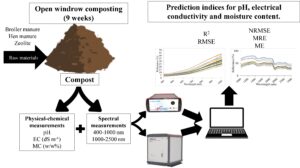
Purpose: Solid organic waste is a major environmental issue in various parts of the world. Proper management techniques for disposing of such wastes can reduce health issues as well as contamination of the environment. Modern scientific techniques in conjugation with traditional practices can manage biowaste in an efficient, economical, and sustainable manner. This present review […]
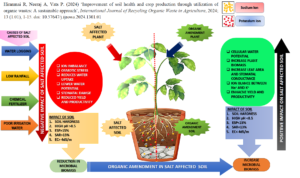
Purpose: Co-composting of mango by-products and biogas solid residue eliminates some shortcomings of composting these wastes separately. Specifically, co-composing solves the problem of the low pH values in mango by-products while enhances biodegradable organic matter of biogas solid residues. However, no research report is available on co-composting of mango by-products (MB) and biogas solid residue […]
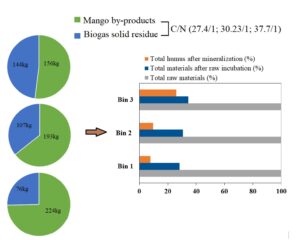
Purpose: Utilization of waste oil palm empty fruit bunches as an ameliorant in the form of biochar enriched with chicken manure and urea fertilizer to increase the fertility of immature (seedling) oil palm planted on peat soil which has poor soil physical, chemical, and biological characteristics. Methods: Biochar material, namely empty fruit bunches, was subjected […]
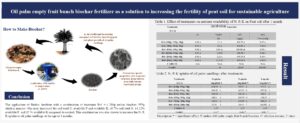
Purpose: In this study, we aim to investigate the suitability of five samples of compost extracted at various concentrations by testing for their phytotoxic response on Lactuca sativa L. We analyze relevant parameters with regards to the quality of the compost. By doing this, we hope to contribute to the attainability of clean, high-value organic […]

Purpose: This study was carried out to evaluate the effects of the tillage system and consecutive application of swine slurry for seven years on arbuscular mycorrhizal fungal abundance and infective propagules in Brazilian soil with crop rotation. Method: The spore density, the external mycelium, and the most probable number of infective propagules of mycorrhizal fungal […]
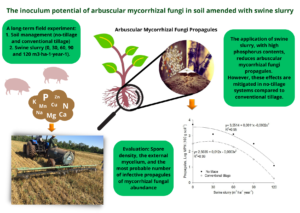
Purpose: Poultry manure (PM) is a concern for Bangladesh. The improvement of quality and safety is always desirable. The experiment assesses the quality and safety parameters of PM with the addition of Saccharomyces cerevisiae and indigenous microorganisms (IMO) in different fermentation conditions (aerobic, facultative anaerobic, and anaerobic) for 7 days. Method: Fermentation condition × treatment […]
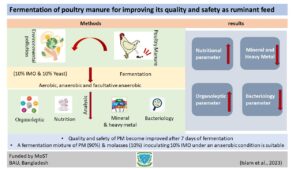
Purpose: To assess the effect of C/N ratio in organic raw materials on the quality of bokashi and to obtain the proper C/N formulation of raw materials and fermentation time for bokashi production. Method: The bokashi was made using a Completely Randomized Design (CRD) with two factors: the C/N ratio in raw materials (R: 30, […]
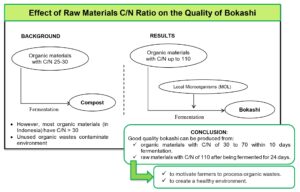
Purpose: It is known that the combination of bioprocesses can contribute to obtaining better results compared to those achieved by applying each process individually. Solid state fermentation of Vitis labrusca grape pomace was carried out using different saprotrophic fungi following a vermicomposting process. Method: A palatability test was performed to evaluate the permanence of Eisenia […]
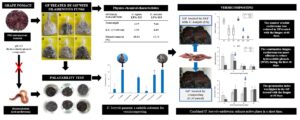
Purpose: With the constant increase in food demand, agriculture became the second-highest waste-generating industry. Crop residues and wastewater from livestock farming are the major contributors and irrational disposal of them has a serious impact on ecosystems as well as human health. In this study, corncob as agriculture waste was used as a treatment agent, after […]
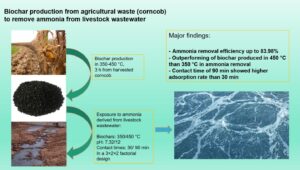
Purpose: This work was aimed to exploit the technique of design of experiments to evaluate the olive mill waste cake residue obtained after oil extraction while searching for an adequate composition of the initial substrate mixtures (RPM, DMOV, FV and EB for humidification), in addition to validate it experimentally. Method: To this end, a mixture […]
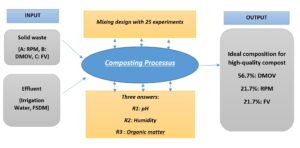
Purpose: There is an increasing trend of using sewage sludge co-composting to produce bio-fertilizers for use in agriculture. However, existing studies on the quality of the produced compost came out with contradicting results, which hinder its sustainable utilization. Hence, this study aimed at assessing the quality of sludge based compost for agricultural use. Method: Four […]
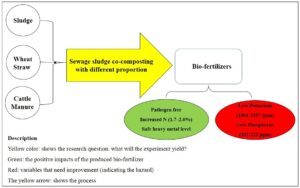
Purpose: The study presents how to develop and optimize a spectral measurement methodology for monitoring the composting process of broiler and hen manure using zeolite. Models were set up to determine the pH, electrical conductivity (EC, dS m−1), and moisture content (MC, w/w%) from reflectance data using spectral indices to establish a rapid, noninvasive, non-destructive […]
